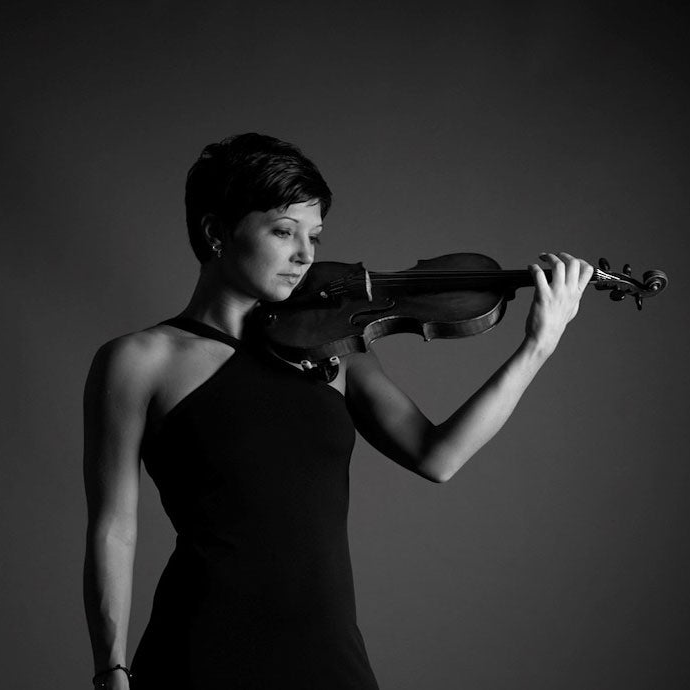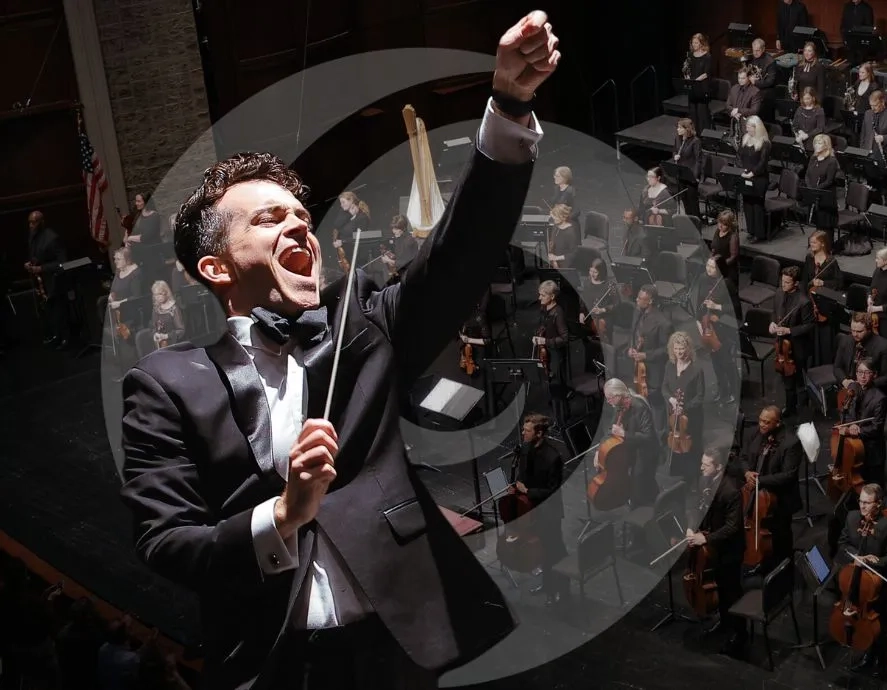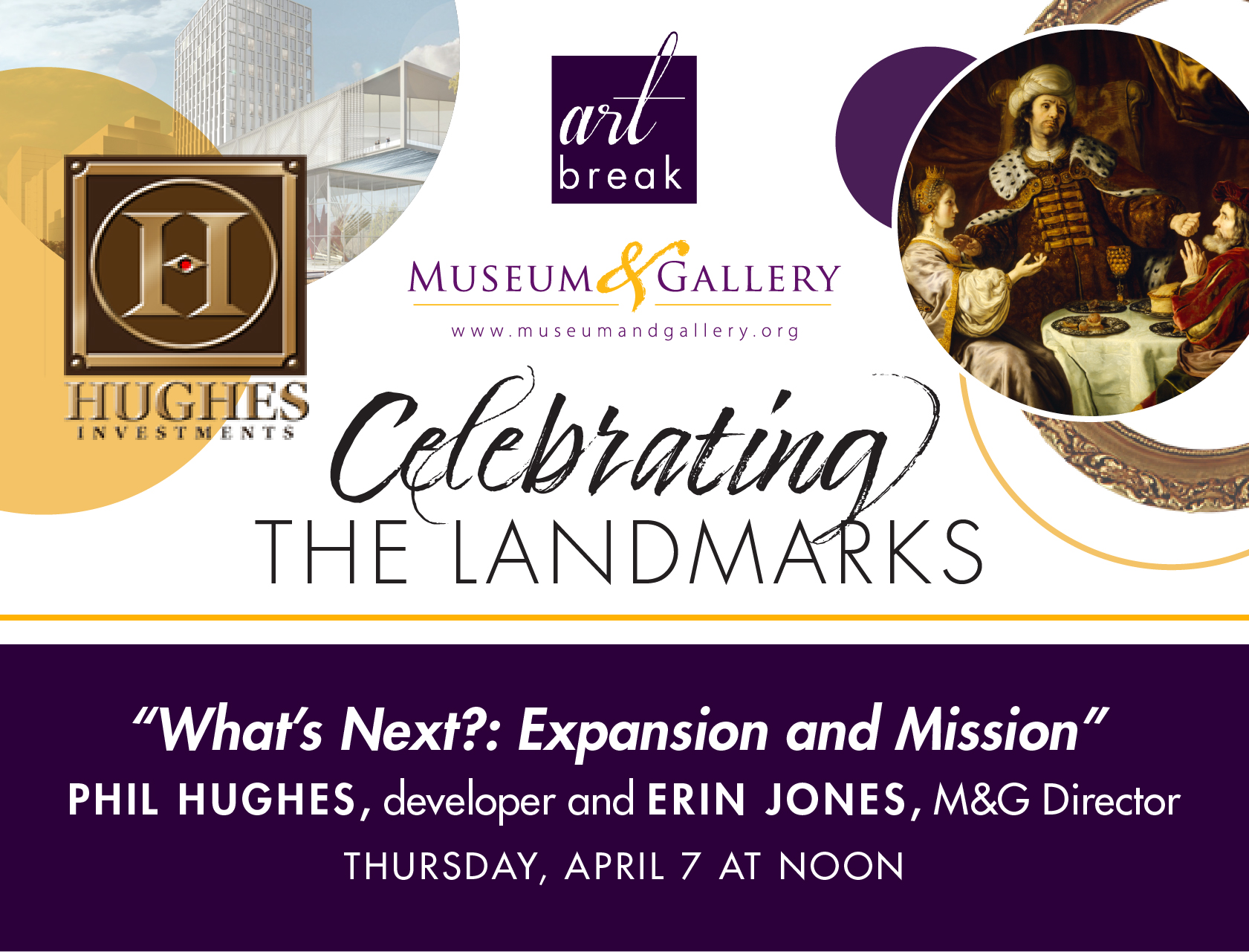
Saint-Saëns' Thundering "Organ" Symphony
Saturday, March 19, 2022, at 8:00 p.m.
Sunday, March 20, 2022, at 3:00 p.m.
Peace Concert Hall
Edvard Tchivzhel, conductor
Laura Colgate, violin
SHOSTAKOVICH Violin Concerto No. 1
SAINT-SAËNS' Symphony No.3 (“Organ”)
![]()
Funded in part by a grant from the Metropolitan Arts Council, which receives funding from the City of Greenville, SEW Eurodrive, BMW Manufacturing Company, LLC, Michelin North America, Inc., and the South Carolina Arts Commission with support from the National Endowment for the Arts.
This organization is funded in part by the
South Carolina Arts Commission which receives support
from the National Endowment for the Arts.
Saint-Saens’ Organ Symphony
Program Notes by Paul Hyde
--------------------------------------------------------------------------
Violin Concerto No. 1
Dmitri Shostakovich (1906-1975)
Shostakovich frequently ran afoul of Soviet censors. It’s understandable that although the composer wrote his First Violin Concerto in 1947-48, he kept it from being performed until 1955, two years after Stalin’s death.
Earlier, in the mid-1940s, the feared Central Committee secretary Andrei Zhdanov had overseen the Soviet Union’s brutal cultural policy. Any artistic creation that did not glorify the Soviet state was deemed unacceptable. Writers, playwrights, filmmakers and music composers were all subject to official condemnation.
Shostakovich had already been denounced by communist authorities for his 1945 Ninth Symphony, which didn’t sufficiently reflect the glory of the Soviet Union’s victory over the Nazis. In 1948, Shostakovich was condemned for his opera “Lady Macbeth of the Mtsensk District,” deemed too sophisticated and supposedly immoral. Such official denunciations could result in prison for artists — or even execution. No wonder, then, that Shostakovich was reluctant to see this complex and intensely dramatic Violin Concerto performed before 1955.
Shostakovich wrote the work for the esteemed violinist David Oistrakh, who premiered it on Oct. 29, 1955 with the Leningrad Philharmonic. Two months later, Oistrakh presented the first U.S. performance of the concerto with the New York Philharmonic-Symphony. The Greenville Symphony is performing the concerto for the first time, with former concertmaster Laura Colgate as soloist.
The concerto makes extraordinary demands on a violin virtuoso. It is written in four movements (slow-fast-slow-fast), rather than the traditional three.
- “Nocturne.” The long, lyrical nocturne is introspective and haunting. Rhythm seems suspended in the flowing soundscape. The movement alternates between calm reflection and a sense of unease.
- “Scherzo.” The second movement is characteristic of Shostakovich’s sardonic scherzos. The music becomes increasingly frenzied as it develops into a macabre dance. One can easily see how this biting music (perhaps satirizing the repressive Soviet state) would not have met the approval of Soviet censors.
- “Passacaglia.” Horns introduce an atmosphere of stern grandeur. What follows is a series of nine variations. The solo violin sings against the backdrop of an ever-shifting chorale. The solo melody, climbing higher and higher, is beautiful, but not without melancholy. The music subsides into the soloist’s extended cadenza, which builds from mournfulness to passionate declamation to virtuosic abandon, recalling melodies from earlier in the concerto.
- “Burlesca.” The cadenza leads without a break to the boisterous finale. David Oistrakh, the violinist who premiered the concerto, called this movement “a joyous folk party.” The soloist provides the musical fireworks. The solo part, played at breakneck speed, is an enormous challenge to a virtuoso’s technique. The momentum never flags as the concerto races to its blazing conclusion.
Symphony No. 3 “Organ”
Camille Saint-Saens (1835-1921)
Camille Saint-Saens’ Third Symphony is undoubtedly the most famous composition for organ and symphony orchestra. The combination of the “king of the instruments” and the full orchestra makes for a brilliant work and a thrilling experience for the audience in the concert hall. Yet Saint-Saens carefully marshals his forces, unleashing the full power of the united ensemble only in the final section of the symphony.
“I have given everything that I had to give,” Saint-Saens said of this work, his last symphony. “What I have done here I shall never do again.”
Saint-Saens combines the clarity and elegance of French orchestral music with the grandeur of German romanticism. The French composer dedicated the work to the memory of Franz Liszt, who was born in Hungary but became a leader, along with Wagner, of the innovative German school of composition.
Liszt’s influence can be heard not only in the brilliance of the orchestration but also in the work’s structure. Saint-Saens embraces Liszt’s idea of “cyclical unity” by using two themes (known as “motto themes”) in various guises throughout the work.
The symphony is written in two movements but the work follows the traditional four-movement symphonic structure. Although the work is known as the “Organ Symphony,” the organ does not really serve in a solo capacity but rather as part of the orchestra. The colorful orchestration includes not only an organ but also a piano (with two performers).
- The oboe introduces the first motto theme: an ascending four-note phrase. Shortly after that, an Allegro section launches the second motto theme, a scurrying, restless motive in the violins. These two themes are developed in vigorous fashion along with contrasting material. The music relaxes, and the organ enters very softly; strings introduce a meltingly lyrical melody based on the first motto theme. The melody moves to the woodwinds and back to strings, soaring ever higher.
- The second movement opens with an aggressive refrain for strings and timpani. An even faster, lighter section involves woodwinds, piano and triangle. The restless opening refrain returns but is suddenly interrupted by a solemn melody in the tuba and double basses. This melody rises on ethereal strings to conclude the first section of this movement in serenity. But be prepared: It’s here where Saint-Saens unleashes the mighty organ with a blazing C-major chord to introduce the finale. Strings meditate on the second motto theme as the pianists play lightning-fast scales and arpeggios. Then the full orchestra proclaims and develops the integrated motto themes, and the work rushes toward its triumphant conclusion.
Paul Hyde, a longtime Upstate journalist, is an English instructor at Tri-County Technical College and Lander University. He writes regularly for the Greenville Journal and Classical Voice North America. Follow him on Facebook and Twitter: @PaulHyde7.

Concert Hall Series
Saturday performances at 7:30 pm
Sunday at 3:00 pm
Opening Night: Beethoven’s Ninth
October 5 & 6
Grieg’s Piano Concerto
November 23 & 24
Tchivzhel Conducts Tchaik 4
January 25 & 26
Duke Ellington’s The River
March 1 & 2
Jacqueline Tso plays
Bruch’s Scottish Fantasy
April 5 & 6
Beethoven and Brazil
May 10 & 11
Gunter Theatre Series
Performance start times vary
Peter and the Wolf
November 9 & 10
The Marriage of Figaro
February 15 & 16
Movers, Shakers, and Noise-Makers
March 22 & 23
Bach-Inspired with Violist Kathryn Dey
May 24 & 25
Special Events
Holiday at Peace
Peace Concert Hall
December 6 at 7:00 pm
December 7 at 1:00 & 7:00 pm
December 8 at 2:00 pm
Harry Potter and the Prisoner of Azkaban™ in concert
Peace Concert Hall
January 11 at 1:00 pm and 7:00 pm
January 12 at 2:00 pm
Star Wars: The Empire Strikes Back in Concert
May 4 at 7:00 pm
Bon Secours Wellness Arena
Music at Hotel Hartness
A luxe chamber music experience in a beautiful space.
Performances at 7:00 pm
Dracula! with Special Guest Dacre Stoker
October 23
Musical Landscapes
April 23
Music in the Gray Loft
Enjoy lunch or wine with a friendly, casual chamber music experience.
Performances at 12:00 and 5:30 pm
Dracula! with Special Guest Dacre Stoker
October 24
Musical Landscapes
April 24
Details and tickets available at greenvillesymphony.org
